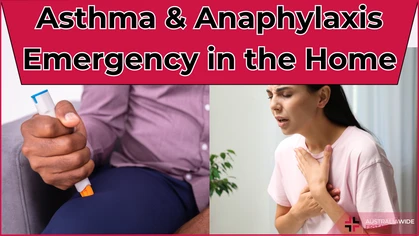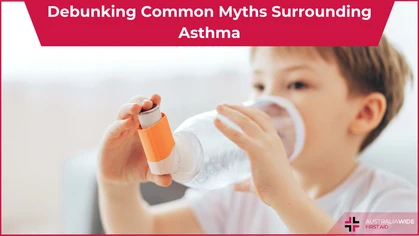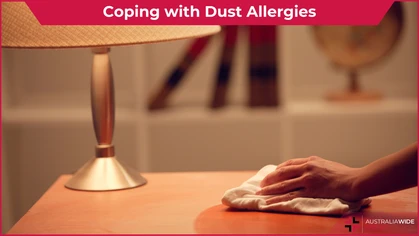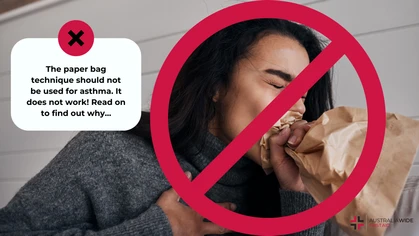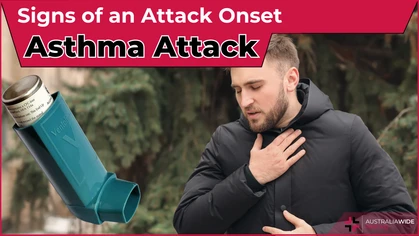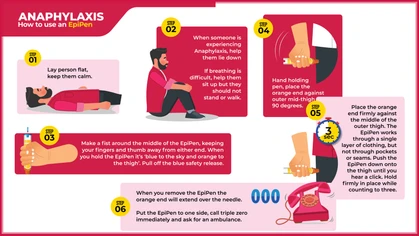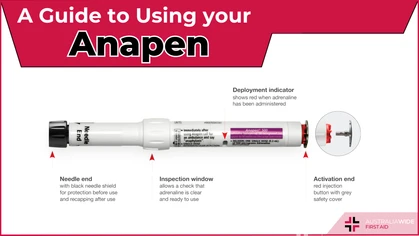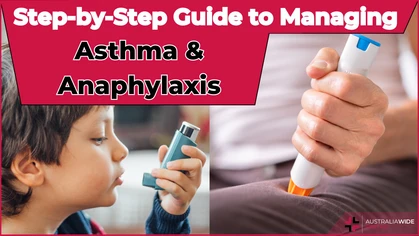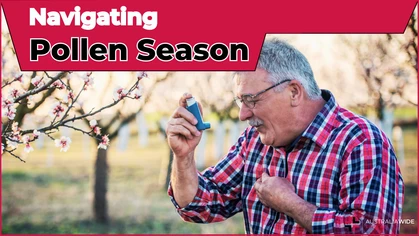Guide to Dealing with Hay Fever in Australia

Allergy and Asthma
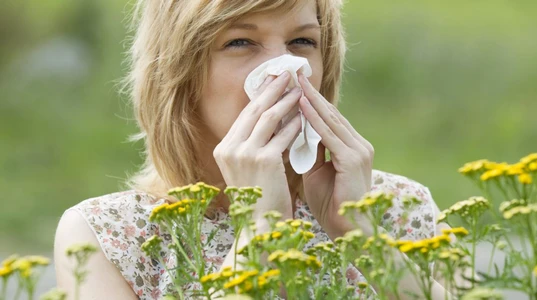
Hay fever's medical name, 'allergic rhinitis', is rooted in the ancient Greek word 'rhino', meaning 'nose'
Let’s open this first aid and treatment guide with some important numbers on allergic rhinitis, a condition more commonly known as hay fever. As many as 1 out of 5 Australians suffers during the hay fever season, which peaks in the warmer months of October to April in Australia. Unlike other conditions, hay fever targets all age groups indiscriminately, but is noted to affect more Australians of working age than very young children and the elderly. The Australian Capital Territory (ACT) and Western Australia are the locations that bear the brunt of the most allergic rhinitis cases in the country. Though the numbers are rather stark, most Australians assume a laissez-faire attitude about hay fever—after all, what could be so serious about having watery eyes or sneezing just a little more than usual? Little do they know, hay fever is nothing to sneeze at, since untreated symptoms could lead to more serious health complications such as asthma or a severe allergic reaction. It is therefore in everyone’s best interest to nip hay fever in the bud—and Australia Wide First Aid, an advocate of first aid training for everyone, is here to show the way. In this feature, you’ll learn how to identify the causes of hay fever, treat individual symptoms, decrease the chances of suffering an allergy attack, and stay on top of your asthma action plan.What is Hay Fever, and What Are Its Causes?
Hay fever is caused by an inflammation of the nose's mucous membrane when it comes into contact with allergens. When allergens enter one’s airways, the body reacts by making an allergic antibody. The medical name for hay fever – allergic rhinitis – is the Greek word rhino (meaning “nose”). This makes perfect sense for sufferers of allergic rhinitis throughout the ages who commonly experience irritated sensations in the nose. In Australia, grass pollen is the primary instigator of hay fever. Threats of allergic rhinitis from grass pollen are often worsened by the weather, i.e. during a windy day when many pollen grains are adrift. Allergic rhinitis can also be caused by other allergens such as house dust, dust mites, animal dander, fungal spores, and air pollutants—it is just a matter of what the victim is exposed to, what they are allergic to, and to what degree.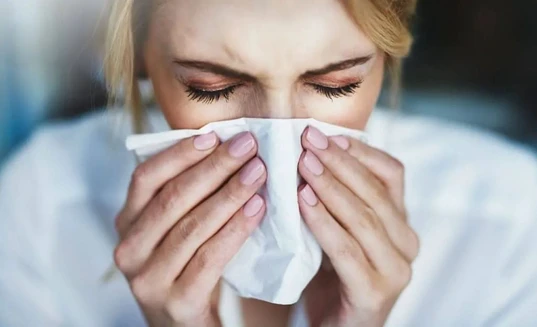
What are the Symptoms of Hay Fever?
Pollen and many other allergens may be typically benign in nature, but if a person is susceptible to hay fever, their body will confront the entry of the allergen by releasing inflammatory cells. In this sense, the body will treat an intrusion of pollen just like it would viruses or harmful bacteria. Such a reaction triggers the familiar symptoms of hay fever, which include the following:- Increased production of mucus and tears;
- Sneezing;
- Runny or stuffy noses;
- Itchy throat, and;
- Red, watery, irritated eyes.
At worst, the symptoms of hay fever can evolve into those of an asthma attack or even anaphylaxis. In those cases, you will need to watch out for extraordinary symptoms such as:
- Unusual shortness of breath;
- Discomfort in the chest area (such as tightness or heaviness);
- Wheezing or coughing;
- Swelling in the throat, tongue, or lips;
What are the Best Approaches to Treating Hay Fever?
The best method to reduce the impact of hay fever on your everyday spring or summer routine is two-fold: treating the symptoms in a timely manner and being conscientious about preventing the spread of pollen grains or other allergens. Under best practices for immediate treatment of hay fever symptoms, Australia Wide First Aid recommends the following:- Rinse irritated eyes with clean, cold water. In most cases, this will provide immediate relief and adequately flush out the pollen grains.
- Take an antihistamine of the non-sedative variety to alleviate swelling, irritation, and perpetual sneezing. Antihistamines should be at the top of your list of medicines to always keep in your first aid kit.
- Upon the recommendation of your doctor or pharmacist, you can use over-the-counter medicines like topical eye drops or corticosteroid nasal sprays to soothe your eyes and nose. Salt water nasal sprays or douches may also be of help.
- For moderate to severe symptoms of hay fever, get cleared by your doctor to use an intranasal steroid spray. This variety of medicine will quell persistent cases of runny or blocked nose.
- You must administer additional treatment for hay fever symptoms that evolve into an asthma attack or severe allergic reaction. Learn to treat asthma and anaphylaxis-related emergencies in your home, which involves adhering to a proper anaphylaxis or asthma plan.
- For additional medical assistance, call Triple Zero (000) or bring the victim to the nearest hospital or emergency room.
To avoid coming into contact with allergens and developing the symptoms of allergic rhinitis, make sure to do the following:
- If you or any of your loved ones are especially prone to hay fever, stay indoors as much as you can. Take extra precaution on windy days or after a thunderstorm, as these are the times when more pollen grains and other allergens are airborne.
- Follow a pollen forecast if your locality has one. A AusPollen has a menu item so you can select Pollen Monitoring for any state in Australia. See also Pollen Forecast, and the pollen forecast section of WeatherZone for up-to-date information on the spread of pollen and any increased risks of exposure.
- When you’re outdoors, you can smear an additional nasal barrier, such as Vaseline, onto your philtrum (or the area right under your nose and above your lips). This can “trap” the pollen grains onto your skin before they reach your airways.
- Wear a hardy pair of sunglasses outside. This additional layer of eye protection will shield your eyes from airborne granules of pollen.
- If you own a dog or a cat, be aware that pollen may collect more frequently on their fur during the warm months. Don’t forget to wash them and keep them clean from these hitchhiking pollen grains, and from animal dander as well!
- Fabrics are also at risk of exposure to pollen, so don’t forget to wash the clothes that you’ve worn outside before using them again. The same care should be afforded to other items of fabric in your home, such as bed sheets or tablecloths.
Combat Hay Fever Season in Australia with Australia Wide First Aid
Hay fever is a common disturbance to Australians, but with an attitude of care and vigilance, fewer people can suffer from its symptoms or from its resultant asthma and allergic attacks. Knowing first aid will give you an edge over the health risks that will plague you during spring and summer—and Australia Wide First Aid will give you the first-class training you need. Our Provide First Aid course covers how to relieve the symptoms of allergic rhinitis, respond to asthma and anaphylaxis-related emergencies, and administer related first aid techniques.
Originally published at
https://www.australiawidefirstaid.com.au/resources/hay-fever-symptoms
as part of the Australia Wide First Aid Articles Library
